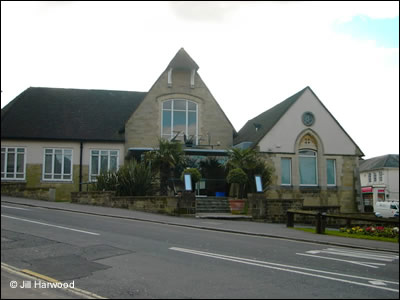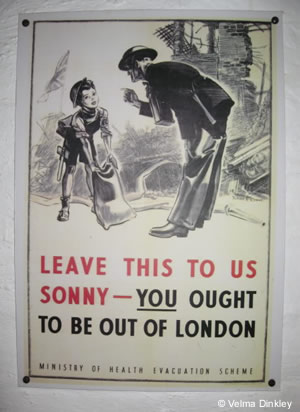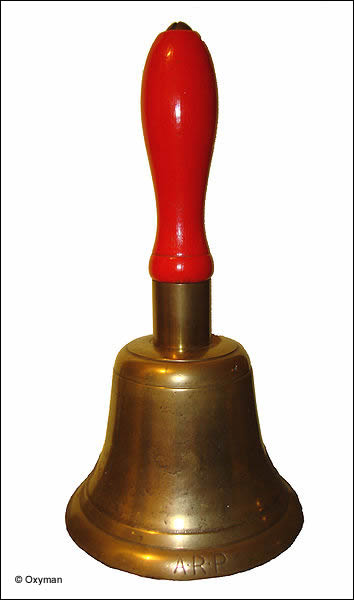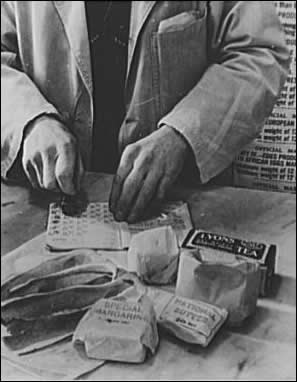St Wilfrid’s CP School in Haywards Heath, Sussex, is fortunate in that it has logbooks for the years of the Second World War from the infant department, kept daily by the head of infants.
The infant building also survives, standing at the junction of the two main shopping streets, close to the church, although it is now a restaurant. As the prospect of war grew, the school and children were being prepared…
1938
In consequence of the international crisis and the threat of war, daily fire drill is being practiced this week and the children being trained to obey unexpected orders swiftly and silently. A representative from the local Air Raid Precautions Committee visited the school on Wednesday morning at the request of the head teachers. He gave it as his opinion that no adequate measures of protection were possible with the premises but suggested that in the event of a raid the children would be safer in the playroom than upstairs.
1939
Week ending July 28
On Thursday morning a fire drill practice was held and time taken was approximately 1 minute, only 66 children were present.

During the summer holidays war was declared and the evacuation plans for London put into action. Children under 5 were evacuated with their mothers, but over 5s were evacuated with their teachers to different parts of the country and billeted with anyone who had a spare room.
1.5 million people were officially evacuated. Some people sent their children to family or friends in safe areas without the help of the authorities; these were known as unofficial evacuees but it is unknown how many were evacuated in this way as no records were kept. St Wilfrid’s returned later than normal from the summer holiday in order to absorb the evacuees.
Week ending Sept 22
On Monday the following arrangements took effect and continued for the whole week:
In the mornings, St Wilfrid’s children (augmented by newly admitted children privately evacuated from vulnerable areas) occupied their own building. In the afternoon two classes occupied the Co-operative Society room over the stores in Sussex Square, the remaining two classes being accommodated in the East room of their own school.
At the same time officially evacuated children from 3 London Schools (Senrab St. Stepney, Henry Fawcett, Kensington and St Matthew’s Westminster) with their teachers occupied the central room and the West room here. It was found necessary as the week went on to clear the centre room in the mornings for the use of St Matthew’s Infants when not outdoors during their recreative period.
The 4 St Wilfrid’s classes were reorganised for the absorption of private evacuees and arranged in the East and West rooms for the morning periods, 2 classes in each room.
Miss Moody [School Inspector] visited on Monday and reviewed the position going round to see each of the rooms provided for the recreation period.
With her approval and consent, one of the Senrab Street teachers was detailed to help the headmistress of St Wilfrid’s Infant School by taking charge of Class 1 and thus setting the headmistress free for the very considerable working organisation in the school as now obliged to work.
The admission of over 7s (due to the junior school being full) has made it necessary to re-arrange all the classes. Schemes of work are being carried on as last year.
Week ending Sept 29
LCC children from Stepney are working this week entirely in the Co-op room and St Matthew’s Westminster are using the middle room here and Henry Fawcett Infants are opening here (1 ½ days) and afterwards using the St Wilfrid’s Parish Room in Church Road, going to the church hall of the Presentation Church the other ½ days. Roll – 113 locals and 30 evacuees.
The building of an air raid shelter began. At the modern St Wilfrid’s our fire drill instructions are to leave the building immediately not stopping for belongings, but in 1939 things were different…
Week ending Oct 20
An air raid shelter is shortly to be constructed in the basement playroom. Until this is ready the playroom (as it is) would be used for and emergency shelter of the ARP. Sirens sounded. Practice in quickly collecting gas masks and outdoor clothes and reaching the playroom by appointed routes have been taken by each class and the whole department turned out to a surprise alarm on Wednesday afternoon.
Week ending Oct 27
Further air raid practices have been taken this week. The outstanding difficulty in putting all the children down quickly into the playroom is getting their outdoor clothing without confusion from the crowded cloakroom with the narrow doorways.
Week ending Nov 3
Air raid drills again practised – with greater success.
1940
Week ending Jan 12

School opened on Tuesday morning working now under difficulties, the playroom being in the hands of workmen who are converting it to a permanent air-raid shelter. The playground is at present largely obstructed with building materials. P.T. has only been possible out of doors by taking classes out on fine days onto the asphalt paths in the park opposite.
Quite apart from the war, the children of St Wilfrid’s had to put up with harsher conditions than we do today. The toilets, in a separate block outside were unheated, so if the temperature dropped below freezing the water pipes froze and the toilets could not be flushed.
Week ending Jan 26
Extremely cold. Snow on ground. Water pipes frozen… orders were obtained to close for the day.
Tuesday: same as Monday, temperatures in the 3 classrooms 39°, 34°, 40°
Wednesday: temperatures 39°, 38°, 40°
Thursday: the children remained at school and work went on as normally as possible. Water supply was as usual. Temperatures in 3 rooms at 9 a.m. were 40°, 38°, 40° respectively but they rose during the day to over 50°.
34° F = 1° C, while 40° F = 4°C, just below the recommended temperature for a fridge! How well could you learn under those conditions?
Week ending Feb 2 1940
Freezing of tanks and impossibility of flushing, the staff assembled on Monday, Tuesday and Wednesday morning but conditions remained unchanged and the few children who came were sent home for the day. On Thursday the tanks were thawing and some degree of flushing was possible. School reopened with 8 infants out of 155.
Further low attendance figures were recorded due to influenza, heavy colds, bronchitis and heavy snowfall. New toilets were to be installed in the Easter holidays, but the work was not finished on time due to shortages and the infants became temporary evacuees themselves and had to attend the evacuees’ school…
Week ending Apr 9 1940
The closure which was to have ended on Apr 9 was not enough as the sanitary work was held up for want of materials (due to wartime conditions). Emergency arrangements had to be made for the education of the children during the extended closure. These children had to use the Co-operative Society’s room over the stores in Sussex Square and to work there on alternate days with Senrab Street LCC Infant School. As the room could only accommodate about ½ of the St Wilfrid’s Infants they had to come alternately, Classes 1 and 2 in the morning and Classes 3 and 4 in the afternoon. It was expected the St Wilfrid’s School could be ready by May 6 but owing to a further delay in getting materials the premises could not be used until May 14.
Once back in their own premises, measures were put in place to assure parents of their children’s safety…
Week ending May 24 1940
A demonstration of air raid drill was given on Tuesday morning. Many parents responded to the invitation sent out by coming to see the drill and the shelters and these parents promised wholehearted co-operation in the event of a raid, by agreeing to leave the children in the teachers’ care, and not to complicate matters by coming to school for them. Daily air raid practices and frequent attention to gas masks has inevitably reduced the attention possible for thorough work at lessons.
After Dunkirk the possibility of invasion became very real, the town’s proximity to the south coast led to the removal of some evacuees…
Week ending June 7 1940
Work continued with daily air raid practices. The serious turn now taken by the war results in the removal of several evacuees and others whose parents have taken them to less exposed districts. There have, however, been some newcomers this week.
Attendance also fell due to an outbreak of measles, then further evacuees arrived – 21 from Lydd in Kent and 6 from St Joseph’s, Croydon in Surrey; both schools had airfields close by which were enemy targets. Then the first air raid siren went off and the children put their drill into practice for the first time…
Week ending Sept 20 1940
Air raid sounded at 1.45 p.m. on Wednesday. Children went quickly to the air raid shelter for about 30 minutes. After the ‘All Clear’ they went to their classes where they were joined by others who had taken shelter on their way to school.
From then on sirens featured regularly. How do you keep small children entertained for up to two hours in cramped semi-darkness several times a week?
Hymns for the Religious Instruction period and afterwards with finger plays and the gramophone… Singing, stories, rhythmic movements and chalk drawing were used but no proper lessons with so little light… Medical inspection by Dr Stott on Wednesday afternoon during alert. Nurse Tuck weighed and measured the children.

1941
In the spring of 1941 the school decided on a method to minimise the time spent in the shelter:-
Week ending Mar 21 1941
It has been decided that on clear days when sudden attacks from the cloudy sky are impossible, that children shall remain at work during an ‘alert’ period but all ready to go down into the shelter at a moment’s notice. Each member of staff in turn will be on duty as a ‘spotter’ during the periods and will patrol outside the building on the lookout for danger.
An ‘alert’ sounded at 11.35 a.m. on Tuesday, when the above course was followed. ‘All Clear’ sounded at 11.50 a.m. and the children were dismissed so that they might reach home for their dinner hour while it was clear. Thursday morning the same course was followed.
Children are hardly ever mentioned by name on the logbook, but here is an exception:-
Week ending April 25 1941
On Monday, just as the children were coming in for afternoon school, a newly admitted official evacuee, Keith Spencer age 5, was brought in by the parents of another child having been found on the Tar Hill gate (which he had climbed in disobedience to orders) with a spike through his hand. As it was a matter for immediate medical aid, the head mistress accepted the kind offer of the parents to take him at once to Dr Smith on Muster Green.
The school was surrounded by spiked railings and barbed wire, which would be a modern health and safety nightmare – and our modern school would not dream of entrusting an injured child to another child’s parents!
Drills did not always go to plan as this extract explains, and you can hear the irritation in the head’s voice:-
Week ending July 25 1941
Thursday afternoon was the occasion of a gas attack test organised by the local ARP Committee. The children were to be in their places in school and at the sounding of a rattle were to put on their gas masks and all windows and doors were to be closed. All instructions were faithfully carried out but the gas attack did not come off at this part of the town. Dismissal delayed until nearly 4.15 p.m. when word was brought in by parents that handbells had been rung some distance away.
With safety in mind to prevent boys being boys and collecting unsuitable souvenirs, they also had a visit from a local police officer:-
Week ending Sep 12 1941
On Thursday afternoon the school was visited by PC Abbott (Education Branch) who gave an address on the dangers of touching any objects dropped from aeroplanes.
1942
1942 brought further trying times with more frozen pipes, “No flushing possible. School closed until Monday next.” and a stove emitting fumes:-
The stove in the East room smoked badly on Wednesday and gave out poisonous coke fumes. It was found that an iron elbow pipe was broken. Pending the possibility of getting a new pipe, Classes 1 and 2 had to move into the West room and Classes 3 and 4 shared the middle room.
There were also staffing problems with the arrival of an untrained teacher:-
Miss Boxall had no previous experience whatsoever beyond teaching of a small Sunday school, it was impossible to put her in charge of a class of 35 children.
Temporary teacher Mrs Muzzall frequently took unscheduled time off on Wednesdays (early closing day) and had a lot of sick leave with tonsillitis, then the headmistress went on four weeks compassionate leave. Dorothy M Hatwell was later appointed to replace her.

By February 1943, after a meeting with parents it was decided to abandon the ‘spotters’ and to take the children straight to the shelter when the siren went off. The governors had now bought a wireless set which was being used for ‘Music and Movement’ broadcast lessons.
In March 1944 the school applied to have the barbed wire round the playground removed:-
Following permission from the military authorities, the barbed wire has been removed, thereby making the playground considerable less dangerous.
Although no accidents are recorded, other than little Keith, it must have been quite a hazard.
On the night of June 13th, 1944, a new and frightening weapon was launched against Britain, the V1 flying bomb, which looked like a small plane and sounded like a motorbike engine. It was quickly nicknamed the ‘Doodlebug’. Four were launched on that first night, the first exploding in London and the second a couple of miles from our school at Mizbrooks Farm, Cuckfield. It was such a loud explosion that the people of Cuckfield thought a plane had crashed.
These bombs were aimed at London, but as they were launched from France they had to fly over south east England to get there. By clever counter intelligence the Nazis were misled into believing that most bombs were reaching London, when in fact they were largely falling short over Kent and Sussex. A further Doodlebug landed close to the site of our present school in the woods between Franklands Village and Haywards Heath cemetery. For three months until the launch area was captured, air raid warnings were a constant feature. On some days the children were dashing off to the shelters up to three times a day.
Early in January 1945 a treat was in store (apart from the two weeks closure due to frozen pipes again):-
Through the W.V.S. a parcel of gifts for the children was received from the American Junior Red Cross. These were much appreciated and the children have written letters of thanks to America.
Then came the news all had waited for:-
On Tuesday May 8th and Wednesday May 9th the school was closed on the occasion of the cessation of hostilities between the Allies and Germany and Victory in Europe. On Thursday May 10th the school closed for the Ascension Day holiday, the children meeting at 9 a.m. to attend church.
Now peace had come there was no need for an air raid shelter so there were plans to convert it, the school was being returned to peacetime conditions and was looking to the future:-
Week ending June 16 1945
Miss Gregory, organiser of canteens and Domestic Science called to view the basement air raid shelter with regard to its conversion into a school canteen.
Week ending Sept 14 1945
As the removal of the wire netting (for the prevention of blast) from the windows had not been completed school did not open on Thursday. 32 local children admitted from Senrab Street LCC evacuee school and a group of 14 ‘local’ children while 6 remain ‘official’ evacuees.
Week ending Oct 12
The whole school attended church on Friday, St Wilfrid’s Day and a collection was taken towards the new school.
After 6 years at war there were many shortages and rationing was to continue for a long time afterwards – but St Wilfrid’s children were in for a treat, and improvements to the building were under way:-
Week ending Feb 8 1946
A gift from the Canadian Kinsmen’s Club of chocolate milk powder was received in bulk and distributed to the children by the teachers.
Week ending April 12 1946
During the early part of this week the county council’s workmen have been removing timber reinforcements used in the air raid shelter.
Week ending May 3 1946
Work continues on the conversion of the air raid shelter into a canteen.
Week ending Nov 29 1946
The canteen arrangements are at last complete and on Thursday the children were able to eat their meal there instead of the public hall.
The school closed in 1951 and moved to its present site in Eastern Road. The parish room and Co-op building occupied by the evacuees are long gone, as is the British Legion room used as a classroom (not mentioned in the log) which was behind the Broadway. Our modern children now study the lives of their wartime counterparts and one of the little girls from the 1940s, now a grandmother in her eighties, visited the children to talk to them last year.
Jill Harwood
© Jill Harwood 2010